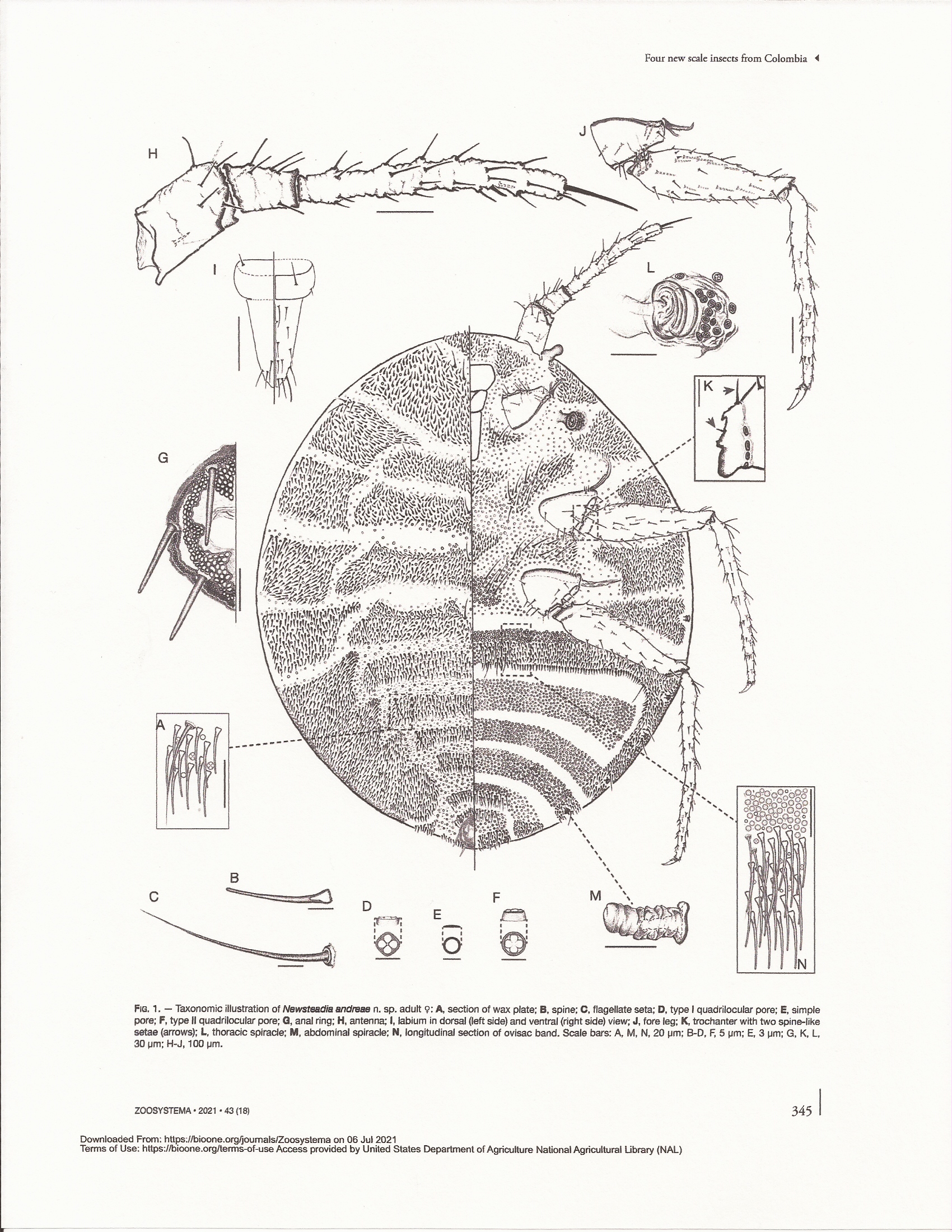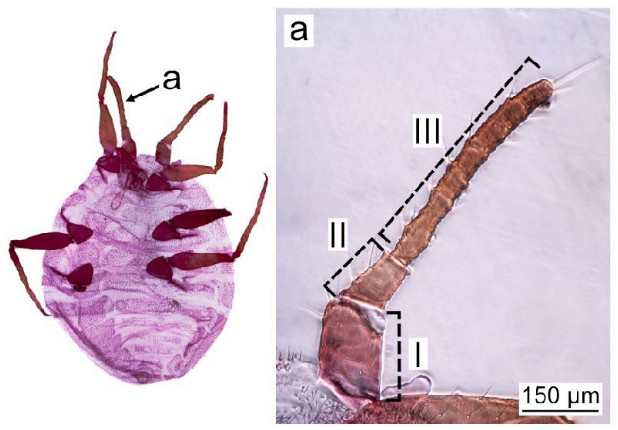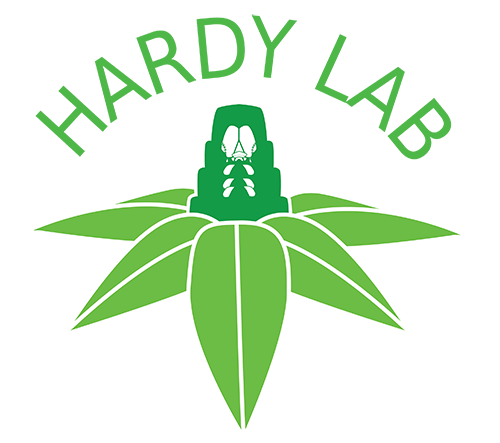Valid Names Results
Newsteadia andreae Caballero, 2021 (Ortheziidae: Newsteadia)Nomenclatural History
- Newsteadia andreae Caballero 2021: 344. Type data: COLOMBIA: Antioquia, Barbosa, Vereda Platanito, Farm Solenia (06°58’34.36”N, 75°23’41.32”W); 1741 m a.s.l.; on roots of Coffea arabica; 9/14/2015; by J. Agudelo. Holotype, female, Type depository: Bogotá: Museo Entomológico Facultad de Agronomía, Universidad Nacional de Colombia; accepted valid name Notes: Colombia • 2 adult ♀; same data as holotype; 2 slides, 1 containing a single paratype, and the other with 1 paratype (marked as “Para”) sharing a slide with the holotype; UNAB. Illustr.
Common Names
Ecological Associates
Hosts:
Families: 1 | Genera: 1
- Rubiaceae
- Coffea arabica | Caball2021
Geographic Distribution
Countries: 1
- Colombia | Caball2021
Keys
- CaballKo2024: pp.3 ( Adult (F) ) [Species associated with coffee roots in Colombia]
- Caball2021: pp.347 ( Adult (F) ) [New World Newsteadia]
Remarks
- Systematics: urn:lsid:zoobank.org:act:4EE88832-00E1-4555-9160-4E57AC43F502
Newsteadia andreae is morphologically similar to several species. The closest species is N. vietnamensis Kozár & Konczné Benedicty, 1999, which is similar in most characters. The main differences are:antenna length, up to 808 μm in N. andreae (949 μm long in N. vietnamensis), and tubular ducts being absent from both surfaces in N. andreae (present on both surfaces in N. vietnamensis). Their geographical distributions and host records are different, however. Newsteadia andreae also resembles Newsteadia morrisoni but differs in having (.N. morrisoni characters in parentheses): no groups of quadrilocular pores posterior to the vulva (quadrilocular pores posterior to vulva in groups); a ratio of SantIII/SantII of 3.7 (2.4); two spine-like setae on the trochanter (trochanter without spine-like setae), and each thoracic spiracle peritreme with quadrilocular pores inside (without quadrilocular pores in the peritremes). (Caballero, 2021)
- Structure: Slide-mounted adult female body oval to round, 1.9 ± 0.3 [1.6] (1.5-2.1) mm long and 1.5 ± 0.2 [1.3] (1.3-1.7) mm wide.This species has two spines on each trochanter; antennal flagellate setae with rounded apices, and three fleshy setae on the distal part of the apical segment; antennal segment II shorter than antennal segment I; five pairs of abdominal spiracles; and lacks groups of quadrilocular pores posterior to the vulva, and tubular ducts. (Caballero, 2021)
- General Remarks: Detailed description and illustrations in Caballero, 2021.
Illustrations
Citations
- Caball2021: description, diagnosis, distribution, host, illustration, key, taxonomy, 344-347
- CaballKo2024: illustration, key, morphology, 3




